One of the most important metrics you can track in accounts receivable, Days Sales Outstanding (DSO) measures the number of days, on average, that it takes your company to collect customer payment after a sale is made. Let’s take a closer look at how to calculate DSO, why it’s important, and how it can be used to shorten your cash collection cycle (or put another way, speed up cashflow!).
DSO Calculation Example
Days Sales Outstanding is calculated by dividing the amount of accounts receivable during a given period by the total value of credit sales during the same period, and then multiplying the result by the number of days in the period measured.
Here’s what the calculation formula looks like:
DSO = (Accounts Receivable ÷ Credit Sales) x Number of Days in Period
Some important things to note …
Some calculations use total sales for the period. However, our example calculates DSO based only on credit sales. That’s because some companies have cash sales where the DSO = 0. Therefore, if cash sales were factored in to the calculation, companies with a high proportion of cash sales would have a much lower DSO which could potentially be misleading in your effort to use this this metric to improve your collections efforts.
In addition, DSO is often calculated on a monthly, quarterly, or annual basis. For example, let’s say you wanted to calculate DSO for a month (30 days) in which you had $150,000 in credit sales and $125,000 in accounts receivable.
($125,000 ÷ $150,000) x 30 days = 25 average DSO
The same can be done to calculate DSO for a quarter or year by adjusting the numbers accordingly.
Why is DSO Important?
Put simply, cashflow helps your business grow. Cash is important for payroll, to purchase inventory, to fund operations, and to reinvest in the company. So, it’s in your company’s best interest to collect payment on invoices in accounts receivable as quickly as possible. This is particularly important for small business where late or delayed customer payments have a disproportionately adverse impact on operations.
Finance managers and executives use DSO as a way of tracking and measuring how quickly the company is converting credit sales into cash that can be used in the business. Perhaps more important, DSO can help to spot trends as to whether it’s taking longer to collect payments from customers and determine whether credit and collections policies need to be adjusted.
On a more detailed level, accounts receivable staff may also rely on DSO to assess trends with individual customers and perhaps identify possible cashflow issues early on. In turn, it may indicate a need to have a conversation with the customer or adjustment in credit policy.
In short, DSO is an important indicator of how quickly your company converts credit sales into cash and how effective your accounts receivable management and collections efforts are.
What is a Good DSO?
As you probably already know when it comes to key performance indicators and metrics, there’s rarely a single number or benchmark that applies to every business. Days Sales Outstanding is no exception.
A “good DSO” number depends largely on the size of your business, the industry you’re in, the proportion of cash to credit sales, whether there’s collections seasonality in your business, and so much more. For example, good DSO for a large pharmaceutical company will vary wildly from a small online retailer.
But with that caveat in mind, a DSO range of 40 – 45 days is generally considered good.
How Can I Improve DSO?
Evaluating individual DSO values can provide a quick snapshot for assessing cash flow at a particular point of time. However, it’s the longer-term trends that are more insightful and helpful in improving DSO.
If your DSO is increasing (that is to say, it’s taking longer to collect payment), it may indicate a variety of things that are probably worth investigating. For example, it may be that salespeople are offering longer terms of payment to boost sales, that credit policies are loosening a bit and allowing customers with poor credit to make purchases, or even indicate that customer satisfaction is declining and customers are purposely taking their time to pay because they aren’t totally happy with the product.
Whatever the case, DSO can help you identify the source(s) of the issue(s) and once the issues are resolved, you’ll probably find that your DSO will start to improve.
Once potential problems are addressed (if any), small changes in customer and collections policies can improve DSO as well. A couple of examples include:
- Collect payment up front or on delivery - some customers are willing and all you have to do is ask. In other cases, offering a small discount may do the job.
- Make payment easy – offering multiple payment options that are quick and easy can go a long way in improving DSO. If customers have to “cut a check” or call in to process a credit card payment, you’re putting up barriers that may delay payment.
- Credit checks and payment terms - DSO is often driven by your customers' ability to pay invoices on time. Therefore, any effort to improve DSO must address customer credit risk and define payment terms based on that creditworthiness.
- Automate and digitize - One simple method to reducing DSO is to convert paper to email with electronic invoicing. Just this one step can help businesses reduce the collection cycle by 2-6 days. In addition, AR management software like Collect-IT allows you to send email reminders that are automatically triggered at certain intervals. Because sometimes, customers simply forget the invoice is outstanding.
- Use Collections Software – improving DSO, minimizing bad debt, and getting paid on time starts with automating your accounts receivable management process. AR software like Collect-IT provides the tools and insights to manage collections, analyze trends, make certain that nothing slips through the cracks, and ensure that your customers pay on time, every time.
👉 See Also: What a Great AR Approach Looks Like









